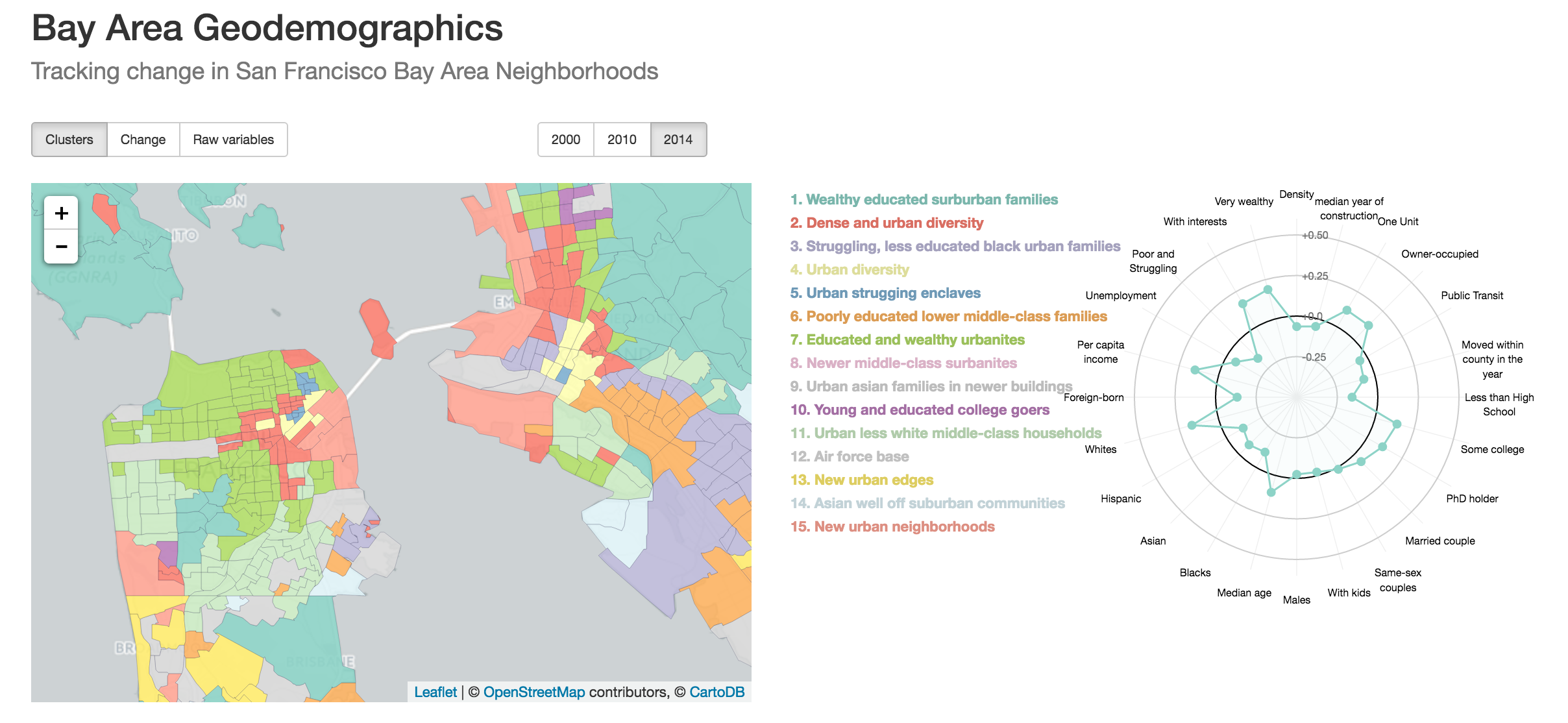
Bay Area geodemographics
Tracking Neighborhood Change in the Bay Area
The social landscape of the Bay Area is changing very rapidly. The debate surrounding gentrification in the Bay Area is an evidence of how contentious the issue of neighborhood change is. For a long time, the dichotomy between urban and suburban areas was relevant in describing US neighborhoods. City centers were decaying while suburban areas were getting wealthier and, often, whiter. The “white flight” is now over and, today, city centers are getting more and more attractive, when suburban areas are getting more diverse.
This project aims at identifying types of neighborhood in the context of the Bay Area and their evolution over time. Most scientific research projects in urban geography aiming at describing neighborhoods use census data as a proxy to understand population change and movements, leading Abbott (1997) to name this process the “variables paradigm”, summed up by Singleton & Spielman (2015):
“The variables mode of inquiry seeks to assess the influence of abstract concepts like wealth or education on some outcome of interest. The variables mode of inquiry often uses survey data to construct models or composite indexes to measure or control for the effect of specific variables.”
— Singleton & Spielman, 2015
However, a neighborhood can’t be understood only using one ax of examination. Any geographic entity is a holistic unity that is a combination of features (wealth, race, age, among others). I favor therefore a contextual mode of analysis where spatial variations reflect changes of type, rather than “increments to variables” (Singleton & Spielman, 2015).